- Home
- Frederick Douglass
Narrative of the Life of Frederick Douglass: An American Slave Page 2
Narrative of the Life of Frederick Douglass: An American Slave Read online
Page 2
1877 President Rutherford B. Hayes appoints Douglass marshal of the District of Columbia, a post he holds until 1881. Douglass returns to St. Michaels, Maryland, and meets with his former owner Auld, who is dying.
1881 President James Garfield appoints Douglass recorder of deeds for the District of Columbia, a post he holds until 1886. Douglass publishes his third autobiographical volume, Life and Times of Frederick Douglass.
1882 His wife, Anna, dies in August.
1884 Douglass causes something of a scandal when he marries his former secretary, Helen Pitts, who is white.
1889 President Benjamin Harrison appoints him minister and consul general to Haiti, a post he holds until 1891.
1894 Douglass delivers his last major speech, “The Lessons of the Hour,” a denunciation of lynchings in the United States.
1895 On February 20 Frederick Douglass dies in Washington, D.C., of a heart attack. He is buried in Rochester beside his first wife and his daughter, Anna.
1988 On February 12 Douglass’s home in Washington, D.C., is designated the Frederick Douglass National Historic Site.
INTRODUCTION
Crossing Over: Frederick Douglass’s Run for Freedom
THE VERY FIRST TIME I assigned Frederick Douglass’s Narrative was in the fall of 1972, in Boston, Massachusetts, when I was teaching a high school equivalency night-course for working adults. I remember the occasion well because one of the students complained to the school director that I was teaching hate. The class had met only once, and we had not yet discussed the book at all, so this student, a white nurse’s aide in her late twenties, directed her protest against the fiery book itself, which she took to be an attack upon her and all white people in America.
In a peculiarly American turn of events, the director, who like me was an African American, happened also to be one of my friends and hallmates at Harvard, where we both were working on our doctorates. In the night-school’s hallway, he told me about the complaint with a long, stern face, and then closed his office door so we could laugh until we nearly fell to the floor. “Ole Brother Douglass is still working them roots,” he said, sliding into the vernacular once we could speak in private. “Go easy on the lady,” he went on. “Gentle her into the twentieth century.”
At that time Douglass was not considered a canonical American author, though he did sometimes turn up in surveys of nineteenth-century writing and in courses with titles like “The Negro in American Literature.” The revolution in black literary studies was just beginning to catch fire; but still at Harvard, for example, there was no course in black literature offered at the graduate level, and the one such undergraduate course, in which I was a teaching assistant, was offered by a linguist through the Afro-American Studies Department. (It was an excellent course.) So it was not a shock that this young woman, a few years older than I and not yet a high school graduate, had never heard of Frederick Douglass. What was surprising was that this slender volume, with its antique figures of speech and rhetorical strategies (as well as literary structures that were so modern they seem to have influenced such revolutionaries in writing as Hemingway eighty years later) would strike her as so current in its potency that she wanted to swing back at it.
Part of the answer to the mystery of her response is that many of white Boston’s citizenry in the early seventies were literally up in arms against the “forced desegregation” of schools and neighborhoods that had been as firmly closed to blacks and members of other groups considered unwelcome as were their counterparts in Mississippi or Alabama. No doubt my student was as unaccustomed to a black teacher as she was to a black author. (What on earth went through her mind when she discovered that the program director was black, too?!)
Does not this woman’s bewildered anger indicate that although the Narrative of the Life of Frederick Douglass, an American Slave existed as a mightily effective political weapon, it is much more than a political weapon, which might have dulled over time? That it is also a work of art whose sentences, with their careful twists and balances and their unrelenting drive, continue to evoke a direct, visceral response? She may have felt the power of the book’s stark, biblical last-first /first-last language: the reverse-English of a man belonging to the group counted last in the American social hierarchy but who nonetheless became a leader of his people—meaning (though my student did not realize it) not just blacks but all Americans and indeed all who love freedom.
With his Narrative, Douglass succeeded in offering his readers, and eventually also historians of American life, an unassailably reliable record of slavery from the viewpoint of one who had been enslaved. (It is important to realize that Douglass could not afford to exaggerate or get any name or detail wrong lest the proponents of slavery leap to declare him a fraud, as they were eager to do in the case of such an accomplished former slave.) But the book also brilliantly performed the aesthetic task of a work of art in depicting how it feels to be a human locked in a struggle against tyrannical odds for freedom and culture; a man seeking a place in a world where no place looks like home. In other words, yes, Douglass was still working those roots.
Douglass’s book lures its reader through the unrelenting power of its narrative line—perhaps literature’s most irresistible force. It is driven by impulses evidently built into the reflex and bone structure of Homo sapiens, the animal that wants a story. Douglass shapes his story to resonate with certain mythic patterns in the modern world. The Douglass of this narrative is a poor lost boy a long way from home, one who has no home to miss or to which he can return. With no place and nothing to call his own, no name, no birthday, no mother to whom he feels closely attached, no father to nurture or even to acknowledge him, this scarred and battered slave boy is an exile in the land of his birth. What Douglass does not invoke is a sense of special honor or privilege based on lineage. He knows little about his past—either of his unknown white father’s side or his mother‘s—and, even if he did, could make no claim to either side. This aligns him with many of America’s dispossessed immigrants, black and nonblack, who either were brought to the New World as slaves or who came here under dire economic distress. Having virtually nothing more than his own health, strength, will, and a strong sense that God’s mysterious power is on his side, Douglass’s task in the new land will be to improvise—that is, not just to find but to help create—a new way of life, a home at last.
What separates Douglass’s quest for improvement from, say, those of dime-store Horatio Alger heroes of a generation later, is that his will to free himself is so directly related to his will to help others free themselves. The climax of his narrative is not just his own escape and, crucially, his marriage, which brings the beginnings of a new family and community; he also finds redeeming work as an activist in the abolition movement, and, as it turns out, as an artist. His identity, in other words, is not that of the bourgeois individual who puts himself first; instead it depends deeply on his providential fellowship with an activist community that gives his own being its most profound meaning. From the first “I was born ...” to the final ringing words addressed to “the millions of my brethren in bonds,” Douglass speaks for that community and for a sense of ideal community that has implications for the nation. As the writer Albert Murray has observed, compared with other American icons seeking freedom—Davy Crockett or Daniel Boone, for example—the case of Douglass stands out. “Nobody was chasing Daniel Boone!” “Not even such justly canonized Founding Fathers as Benjamin Franklin and Thomas Jefferson represent a more splendid image and pattern for the contemporary American citizen,” writes Murray. “On balance, not even Abraham Lincoln was a more heroic embodiment of the American as self-made man. After all, Lincoln like Franklin and Jefferson was born free.”a
Douglass was an American improviser whose mighty task was to have the courage, simply, to be—an achievement that by no means could be taken for granted in a society that defined him as a domestic animal, a piece of property to buy, work, rent, inherit, or sell. The s
imple assertion of Douglass’s selfhood begins quietly, on the title page, with the announcement that this Narrative of the Life of Frederick Douglass, an American Slave was “written by himself.” In direct opposition to the southern slave codes, which he repeatedly mocks and derides in his Narrative, Douglass has garnered sufficient literacy to get his story down in black and white. And lest anyone miss the connection between his achievement of authorial power and his fight against slavery’s hardships, he declares, “My feet have been so cracked with the frost, that the pen with which I am writing might be laid in the gashes” (p. 36).
The two stirringly oratorical introductory notes by Douglass’s white brothers in the movement, William Lloyd Garrison and Wendell Phillips, serve to guarantee the authenticity of the narrative that follows. But Douglass is the one in control of his story, its author and authority asserting the truth of what he says not through the presence of white guarantors but through the power of his own language as a persuasive, sometimes poetic writer whose voice and witness we trust. His book is a shining example of what Robert Stepto has brilliantly termed a “self-authenticating narrative”;b it is a book whose proof of truth-value lies precisely in its own language.
Douglass’s Narrative presents its hero as a reasonable and feeling human being, a man with a soul. But it also argues, implicitly, for the whole slave community as worthy members of the world community of culture-makers, all denials of their humanity to the contrary (that is, all the scenes of the slaves herded, fed, and beaten like animals). Douglass is a maker of literature and history; the black community writ large has created cultural forms people can use to survive the pit of slavery and to help rebuild a modern world.
For one thing, African Americans created the slave songs—the musical fountain from which virtually all modern American music, including the blues, has sprung. In terms echoed by W. E. B. Du Bois nearly sixty years later,c Douglass describes the rich mix of feeling in the songs of sorrow sung by slaves as they took off for the Great House Farm:
While on their way, they would make the dense old woods, for miles around, reverberate with their wild songs, revealing at once the highest joy and the deepest sadness. They would compose and sing as they went along, consulting neither time nor tune. The thought that came up, came out—if not in the word, in the sound;—and as frequently in the one as in the other. They would sometimes sing the most pathetic sentiment in the most rapturous tone, and the most rapturous sentiment in the most pathetic tone.... They would sing, as a chorus, to words which to many would seem unmeaning jargon, but which, nevertheless, were full of meaning to themselves. I have sometimes thought that the mere hearing of those songs would do more to impress some minds with the horrible character of slavery, than the reading of whole volumes of philosophy on the subject could do (pp. 25-26).
It is true that Douglass is concerned about the dangers of misreading this music. He concludes his eloquent discussion of the slave’s songs with a warning that they could easily be misunderstood. Douglass:
I did not, when a slave, understand the deep meaning of those rude and apparently incoherent songs. I was myself within the circle; so that I neither saw nor heard as those without might see and hear. They told a tale of woe which was then altogether beyond my feeble comprehension; they were tones loud, long, and deep; they breathed the prayer and complaint of souls boiling over with the bitterest anguish. Every tone was a testimony against slavery, and a prayer to God for deliverance from chains. The hearing of those wild notes always depressed my spirit, and filled me with ineffable sadness. I have frequently found myself in tears while hearing them. The mere recurrence to those songs, even now, afflicts me; and while I am writing these lines, an expression of feeling has already found its way down my cheek. To those songs I trace my first glimmering conception of the dehumanizing character of slavery. I can never get rid of that conception. Those songs still follow me, to deepen my hatred of slavery, and quicken my sympathies for my brethren in bonds. If any one wishes to be impressed with the soul-killing effects of slavery, let him go to Colonel Lloyd’s plantation, and, on allowance-day, place himself in the deep pine woods, and there let him, in silence, analyze the sounds that shall pass through the chambers of his soul,—and if he is not thus impressed, it will only be because “there is no flesh in his obdurate heart” (p. 26).
Aware that he himself had misread the meanings of this music, Douglass warns his reader against missing the note of sadness and implied protest—against the “soul-killing effects of slavery”—embedded in the music. Addressing in particular his sympathetic northern white reader, he writes:
I have often been utterly astonished, since I came to the north, to find persons who could speak of the singing, among slaves, as evidence of their contentment and happiness. It is impossible to conceive of a greater mistake. Slaves sing most when they are most unhappy. The songs of the slave represent the sorrows of his heart; and he is relieved by them, only as an aching heart is relieved by its tears. At least, such is my experience. I have often sung to drown my sorrow, but seldom to express my happiness. Crying for joy, and singing for joy, were alike uncommon to me while in the jaws of slavery. The singing of a man cast away upon a desolate island might be as appropriately considered as evidence of contentment and happiness, as the singing of a slave; the songs of the one and of the other are prompted by the same emotion (pp. 26-27).
On this question of reading and misreading, Robert Stepto has written brilliantly that Douglass’s quest can be focused into two specific terms: He sought freedom, and he sought literacy.d Make no mistake about it: His was a physical fight, against the slave-breaker Edward Covey and others, and a literal struggle to remove his body from the South, where slavery was legal. What fascinates me here is the vital connection between Douglass’s ongoing physical struggle and his flaming determination to learn how to write and read—including the ability to read such cultural manifestations of slavery as the slave songs.
In the compressed and powerful chapter VI, Douglass describes overhearing Mr. Auld, his new owner, warning his wife against teaching the slave boy Frederick his ABCs. He told her “that it was unlawful, as well as unsafe, to teach a slave to read.” Further, he declared these infamous words:
“If you give a nigger an inch, he will take an ell. A nigger should know nothing but to obey his master—to do as he is told to do. Learning would spoil the best nigger in the world.... If you teach that nigger ... how to read, there would be no keeping him. It would forever unfit him to be a slave. He would at once become unmanageable, and of no value to his master. As to himself, it could do him no good, but a great deal of harm. It would make him discontented and unhappy” (pp. 40-41).
Douglass’s recollected response to his master’s words is mythic:
These words sank deep into my heart, stirred up sentiments within that lay slumbering, and called into existence an entirely new train of thought. It was a new and special revelation, explaining dark and mys terious things, with which my youthful understanding had struggled, but struggled in vain. I now understood what had been to me a most perplexing difficulty—to wit, the white man’s power to enslave the black man. It was a grand achievement, and I prized it highly. From that moment, I understood the pathway from slavery to freedom.... In learning to read, I owe almost as much to the bitter opposition of my master, as to the kindly aid of my mistress. I acknowledge the benefit of both (p. 41, emphasis mine).
As a reader and writer, Douglass could read the newspaper as well as books that happened his way—so that he could better understand his predicament and possible solutions to it; he also was literally able to write himself a false pass (in his first failed escape attempt, he also wrote passes for his co-conspirators), which was crucial to his eventual plan to get out of the slave South. Freedom and literacy—tightly bound strands in the fabric of Douglass’s mythic quest. Further, as we have seen, Douglass’s quest for literacy involved not merely the technical ability to read and write but also the skil
l to “read” the people, places, situations, and expressive forms around him with deeper and deeper understanding. He wrote his way to freedom not just with a pass but also by articulating new terms for living: “to dream of vast horizons of the soul,” as Langston Hughes has put it, to “make our world anew.”e
Along with the complex songs, black Americans also created a cycle of trickster tales—yarns about Brer Rabbits, Brother Johns, and others living by their wits in the briar patch of the United States. As he tells in this Narrative—as if tempered by these slave stories—Douglass learns, by degrees, that he is born into a world controlled by slave-owners whose power is nearly absolute, that as an American slave he lives in what might be called the world of the trickster, and that to survive he must learn the games of trickery by which he is being kept.
In the realm of the tales told by black Americans, and by many other groups around the world, the trickster is a paradoxical charac ter, both wish-fulfillment hero and horrific villain. The Brer Rabbit of black American tales collected “in the field,” both in the nineteenth century of Frederick Douglass and through the mid-twentieth century not far from our own times, is precisely such a figure of double purposes: admired for his ability to overturn the powerful with cleverness and stealth, and yet hated for his insatiable greed and selfishness. Conditioned, perhaps, by the Brer Rabbits on television (in a sense Bugs Bunny is a latter-day Brer Rabbit) and in the movies (every other American over the age of fifty has seen Walt Disney’s 1946 film Song of the South, with its fast, fluffy wish-fulfillment hero Brer Rabbit), we tend to remember our admiration for his good humored ability to dance away from traps set for him by the Elmer Fudds of the world.

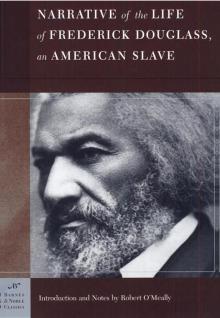 Narrative of the Life of Frederick Douglass: An American Slave
Narrative of the Life of Frederick Douglass: An American Slave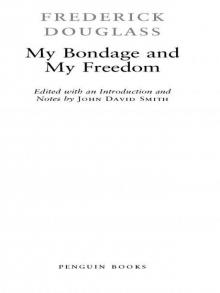 My Bondage and My Freedom
My Bondage and My Freedom Two Slave Rebellions at Sea
Two Slave Rebellions at Sea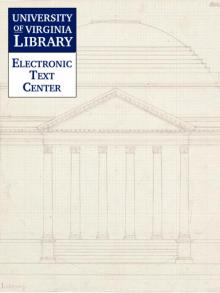 The Color Line in America
The Color Line in America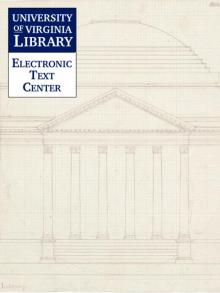 The Negro Exodus from the Gulf States
The Negro Exodus from the Gulf States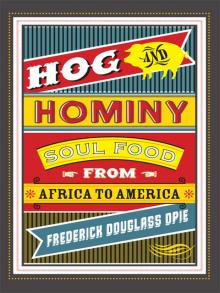 Hog and Hominy: Soul Food From Africa to America
Hog and Hominy: Soul Food From Africa to America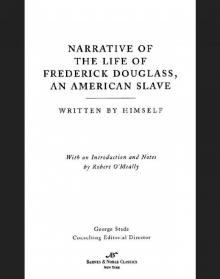 Narrative of the Life of Frederick Douglass
Narrative of the Life of Frederick Douglass![An Appeal to Congress for Impartial Suffrage [a machine-readable transcription] Read online](http://i1.bookreadfree.com/i/03/23/an_appeal_to_congress_for_impartial_suffrage_a_machine-readable_transcription_preview.jpg) An Appeal to Congress for Impartial Suffrage [a machine-readable transcription]
An Appeal to Congress for Impartial Suffrage [a machine-readable transcription]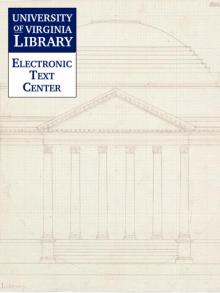 The Color Line
The Color Line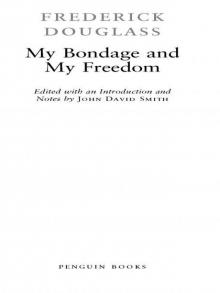 My Bondage and My Freedom (Penguin Classics)
My Bondage and My Freedom (Penguin Classics)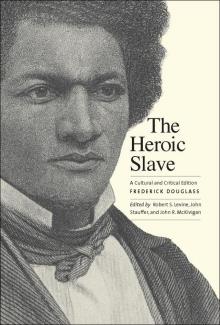 The Heroic Slave
The Heroic Slave